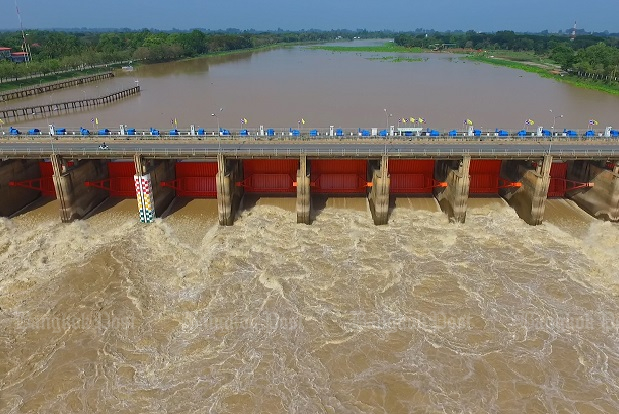
The Chao Phraya Dam in Chai Nat province has increased its discharge rate as the water level in the reservoir continues to rise on high-volume run-off from the North.
Riverside communities upriver from the dam report flooding.
As of 7am Tuesday, the water level near the dam wall was 6.75 metres above median sea level (MSL), which prompted management to inrease the rate of release by 50 cubic metres per second to 649 cubic metres per second, said Suchat Charoensi, director of the 12th Royal Irrigation Office in Chai Nat.
The average water level downstream rose immediately by 29 centimetres to 10.15m above MSL. The increase in the release rate is expected to cause rises in water levels further downstream of 10cm to 20cm.
The rate may have to be further increased to 700 cubic metres a second soon given the current situation upstream, he said. Communities along the river downstream, especially riverside villages in Bang Ban and Sena districts of Ayutthaya province were advised to closely monitor the river as they were likely to be affected by flooding.
In upstream Nakhon Sawan province more than 2,500 rai of farmland has been flooded. Villagers are calling for a further increase in the discharge rate from the Chao Phraya Dam to help ease the situation.
Manot Uthairat, village head of Ban Moo 14 in tambon Bueng Nam Sai in Muang district of Nakhon Sawan, said the level of water draining through Bang Khian canal in his community has been rising since Sunday.
Many people had hired backhoes to build earthen flood walls to prevent their paddy fields being damaged by the surging water. People who had not prepared for the sudden overflow were now seeing their fields covered with floodwater, Mr Manot, said.